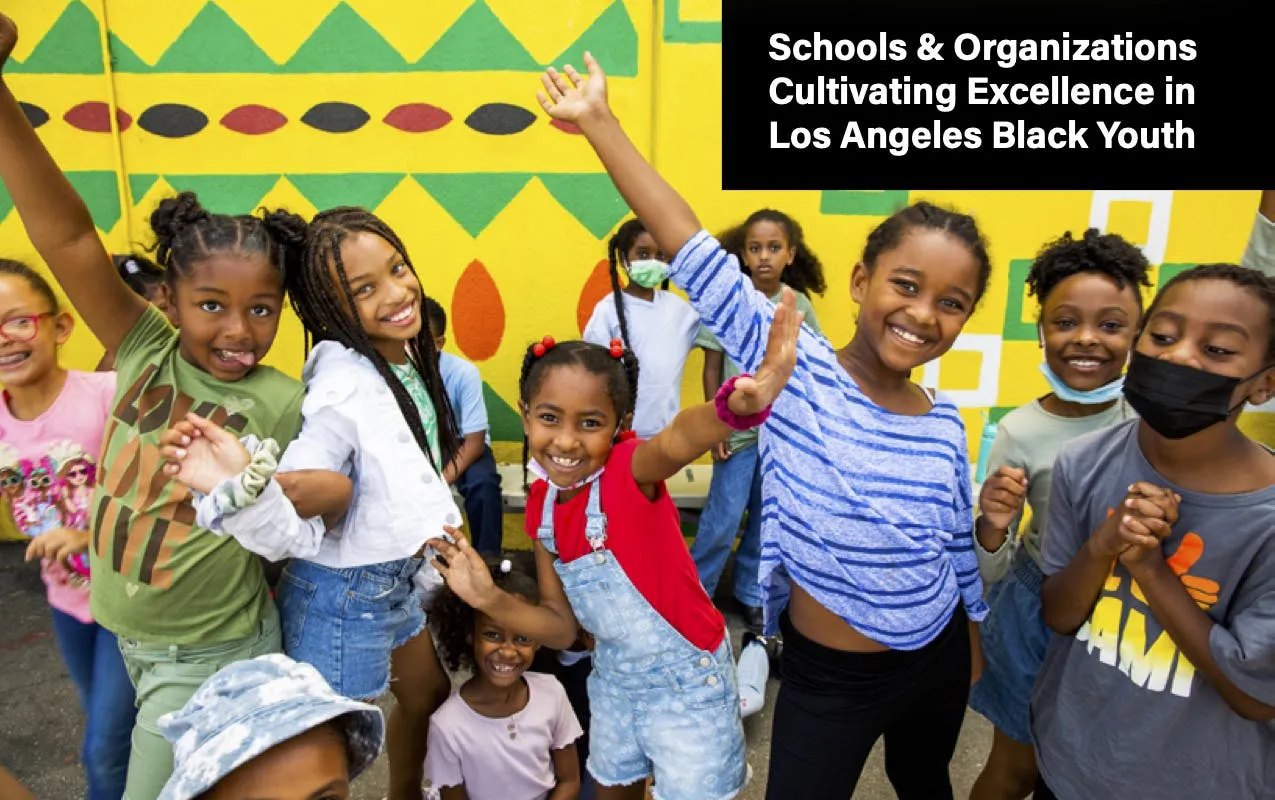Highlighting the strategies and efforts of schools and community organizations fostering the success of Black students in Los Angeles, researchers from UCLA’s Center for the Transformation of Schools (CTS) today released, Bright Spots: Schools and Organizations Cultivating Excellence in Los Angeles Black Youth, a new report examining the benefits of providing targeted support for Black students.
“Amid pandemic and strife, these ‘bright spots,’ are shining a light on the success of Black students and showing us how we can help them to learn and achieve,” said Tyrone C. Howard, a professor of education at UCLA and co-faculty director of CTS. ”In doing so, they are illuminating the path for others to follow in support of meaningful efforts to further student success.”
Building upon a 2021 study, Beyond the Schoolhouse: Digging Deeper | COVID-19 & Reopening Schools for Black Students in Los Angeles, the new report provides an analysis of three Los Angeles K-12 public schools and two community-based organizations that have a history of facilitating academic success for the Black students they serve: Baldwin Hills Elementary, 99th Street Elementary, King Drew Magnet High School, Community Coalition (CoCo), and Social Justice Learning Institute (SJLI).
Despite the pronounced structural and educational disadvantages affecting Black students – many of which have been exacerbated by the COVID-19 pandemic – these schools and community organizations continue to foster the success of Black students.
“These ‘bright spots’ have an established history of furthering academic success for the Black students they serve,” said Angela James, research director at the UCLA Center for the Transformation of Schools. “Their strategies are illuminative for both practitioners and scholars working to create broader equity within educational systems.”
In the new study, CTS researchers present a focused analysis expounding the practices, approaches, techniques, and collaborations used by these organizations that have sustained their effectiveness in supporting Black students. Student focus groups and individual interviews conducted for the study with students and staff reveal four major themes among the “Bright Spots”:
- Holistic support of students
The “Bright Spots” practice holistic support approaches where academic needs are paired with practices to support the overall well-being of students, including students’ mental health and socio-emotional needs. This creates a comprehensive network of support. Interviews with staff and students reveal that educators play a big part in supporting their students through academic preparation and resourcing, addressing non-academic needs, and providing socio-emotional supports
- Culturally relevant teaching and engagement strategies
Teachers, staff, and facilitators identified using culturally relevant and social justice-oriented curriculum to create engaging lessons that are tailored to Black students for the purpose of increasing student engagement and promoting positive academic outcomes, identity affirmation, and self-representation within their learning experience. Researchers found that lesson plans on Black history and African American culture allowed students to better connect with the curriculum.
- Learning as a tool of empowerment
Researchers observed a theme of learning opportunities doubling as empowerment spaces, giving Black students the opportunity to become active learners and civil participants. Social Justice Learning Institute’s YPAR (Youth Participatory Action Research) program offers students the opportunity to apply research skills learned at the institute to investigate social inequities within their communities, providing learning spaces where students can develop confidence to discuss their opinions and collaborate with peers.
- Co-construction of learning spaces and opportunities
A project-based learning approach allows students the opportunity to work with teachers and staff to develop solutions, teaching students to develop problem-solving and critical thinking skills at an early stage. Interviews revealed particular examples in which students engaged with structural conditions impacting their communities or personal challenges affecting them as Black youth. At both school sites and community organizations, faculty and staff were able to identify and describe the immediate benefit students experience when able to actively participate in the personalized design and execution of their learning spaces and lessons.
